Uni-T UT890D+ Handleiding
Uni-T
Multimeter
UT890D+
Bekijk gratis de handleiding van Uni-T UT890D+ (2 pagina’s), behorend tot de categorie Multimeter. Deze gids werd als nuttig beoordeeld door 138 mensen en kreeg gemiddeld 4.2 sterren uit 69.5 reviews. Heb je een vraag over Uni-T UT890D+ of wil je andere gebruikers van dit product iets vragen? Stel een vraag
Pagina 1/2

Buzzer
Fuse
Auto shut off
Grounding
AC
Double Insulation
Relative Measurement
Warning
DC
Diode
Range
600mV 0.1mV
0.001V
0.01V
0.1V
1V
6V
60V
600V
1000V
Resolution Accuracy
±(0.5%+4)
±(0.5%+2)
±(0.7%+10)
Range
600 0.1Ω Ω
0.001kΩ
0.01kΩ
0.1kΩ
0.001MΩ
0.01MΩ
6kΩ
60kΩ
600kΩ
6MΩ
60MΩ
Resolution Accuracy
±(0.8%+5)
±(0.8%+3)
±(1.0%+25)
Operating Manual
I. General Introduction
This brand new UT890C+/D Operating Manual is a handheld
3-5/6 digit True RMS Digital Multi-meter featuring stable performance
and high reliability. Its whole circuit design utilizes a large scale
integrated circuit that uses ∑△ADC converter as its core and is
further equipped with full function overload protection, making it an
ideal tool for users to measure the followings: DC and AC voltage,
electric current, resistance, capacitance, frequency, temperature
(UT890D/C+), diode, triode and continuity test.
Safety Rules and Instructions
● This unit is designed and produced in strict accordance with
GB4793, Safety Requirements for Electronic Measuring Instrument
and Safety Standards coded as IEC61010-1 and IEC1010-2-032. It
complies with safe standards, such as double insulation, over voltage
(CAT II 1000V, CAT III 600V) and class of pollution II. Please follow
the instructions contained in this manual, otherwise the protection
provided by this unit may be impaired.
● You should not use this unit unless its back cover is properly
secured in place, otherwise you are exposed to shock hazard.
●
The range switch should be switched to a correct range.
●
Check the insulation layer of the test leads to ensure no
damaged or broken cable.
●
The red and black test leads should be well inserted into the
jacks that are in compliance with the measurement requirements to
ensure good contact.
●
The input signal should not exceed the specified limit value
to avoid shock or unit damage.
● It is prohibited to change range when measuring voltage or
electric current so as to avoid unit damage.
● Damaged fuse must only be replaced with fuse with identical
specification.
● To avoid electric shock, the potential difference measured
between “COM” and earth “ ” should be no more than 1000V.
●
To avoid electric shock, test with great caution in case the
voltage to be measured maybe higher than DV 60V or AC 30Vrms.
● Battery should be replaced in time so as to ensure measurement
accuracy when the LCD displays “ ”.
● Power should be turned off immediately upon the test is completed
and battery should be taken out if it may not be used for a long
period of time.
● Do not use the unit under an environment with high temperature
and high humidity, especially not store it in a wet place as the
dampened unit may perform badly.
● Please do not change the circuit of the unit arbitrarily so as to
avoid unit damage or safety hazard.
● Maintenance: Please use wet cloth and mild detergent rather
than abrasive material or solvent for the cleaning of its exterior housing.
III. Characteristics
● More than 30 functional ranges are available.
● LCD display, visible area 63×29mm.
● Over range display “OL”.
● Maximum displayed value 5999.
● Overload protection for all ranges.
● Auto power off.
● Temperature scope:
Working temperature: 0 ~40 32 ~104℃ ℃( ℉ ℉)
Storage temperature: -10 ~50 14 ~122℃ ℃( ℉ ℉)
● Low battery indicator: The symbol “ ” will be displayed at top
left of the LCD.
● It has functions, including data hold, measurement of maximum/
minimum value, relative measurement, backlight, etc.
II. Symbol Description
Low battery
IV. Technical Indexes
Accuracy: ± , 1 year warranty period( )α% reading plus figure
Environment Temperature: 23 ±5℃ ℃
Relative humidity: <75%
1. DC Voltage
Input impedance: 1GΩfor the range of 600mV while 10MΩ for all
other ranges.
Overload protection: 750Vrms or at a peak value of 1000Vp-p.
2. AC Voltage
Range
6V 0.001V
0.01V
0.1V
1V
60V
600V
750V
Resolution Accuracy
±(0.8%+3)
±(1.0%+10)
Input impedance: 10MΩfor all the ranges.
Frequency scope: 40Hz – 1KHz (Only applicable to sine wave and
triangular wave, but only being referable for other waves whose
frequencies are equal or higher than 200Hz.)
Guaranteed Accuracy: within 5~100% of its range and allow less t
han 5 figures of remaining reading in case of short circuit.
Overload Protection: 750Vrms or at a peak value of 1000Vp-p.
Display: True RMS
3. DC Current
Range
60μA 0.01μA
0.001mA
0.01mA
0.1mA
0.01A
6mA
60mA
600mA
20A
Resolution Accuracy
±(0.8%+8)
±(1.2%+5)
±(2.0%+5)
Overload prote.ction: Fuse F1-630mA/250V, F2-20A/250V
Maximum input current: 20A (measuring electric current between
5A and 20A, testing time ≤10 seconds, Interval≥15 mins).
Measuring voltage drop: 600mV when at its full range.
4. AC Current
Range
6mA 0.001mA
0.01mA
0.1mA
0.01A
60mA
600mA
20A
Resolution Accuracy
±(1.0%+12)
±(2.0%+3)
±(3.0%+5)
Overload protection: Fuse F1-630mA/250V, F2-20A/250V
Frequency scope: 40Hz – 1KHz (Only applicable to sine wave and
triangular wave, but only being referable for other waves whose
frequencies are equal or higher than 200Hz.)
Guaranteed Accuracy: within 5~100% of its range and allow less
than 2 figures of remaining reading in case of short circuit.
Maximum input current: 20A (measuring electric current between
5A and 20A, testing time ≤10 seconds, Interval≥15 mins) Measuring
voltage drop: 600mV when at its full range
Display: True RMS
5. Resistance
Range of 600Ω: measured value=displayed value - value shown when
test leads are short connected Open circuit voltage: About 1V
Overload protection: 600Vrms.
6. Capacitance
Range
9.999n 0.001nFF
0.01nF~ 0.1μF
1 Fμ
10μF
99.99nF~ 999.9μF
9.999mF
99.99mF
Resolution Accuracy
±(5.0%+35)
±(2.5%+20)
±(5.0%+10)
10mF≤C≤20mF:±(10.0%+5)
>20mF:reading is for reference only
Range: Auto (Reading for distributed capacitance of test leads may
be shown when the unit is in open circuit. It is recommended to use
REL mode to measure for any capacitance of less than 1μF)
Overload protection: 600Vrms.
7. Frequency
Range
9.999Hz~10.00MHz 0.001Hz~0.01MHz
Resolution Accuracy
±(0.1%+5)
Range: Auto
Input frequency:
≤100KHz: 100mVrms≤Input frequency≤30Vrms;
>100kHz~1MHz: 200mVrms≤Input frequency≤30Vrms;
>1MHz: 600mVrms≤Input frequency≤30Vrms;
Overload protection: 600Vrms .
8.Diode & Buzzer Continuity Test
Range Description
Display forward voltage of the diode under test (approximate
value) and the range scope is 0 V. ~3
If it is equal or less than 10 , the buzzer beeps, indicatingΩ
circuit is closed; if it is equal or more than 100 ,the buzzer Ω
remain silence, indicating open circuit with a voltage of
approximately 1V.
Overload protection: 600Vrms .
9. hFE Test for Transistors
Range Description
hFE
Test Condition
It can be used to test hFE specificiations
for Transistors of NPN or PNP type.
Display range: 0-1000β
Base current is about
10μA, Vce is about
1.2V
10. Temperature Test (Only for UT890C+)
Accuracy
±3
±5
±(1.0%+3)
±(1.5%+5)
±(2.5%+5)
±(2.0%+3)
Function Range Resolution
Temperature ℃
Temperature ℃
-40~0℃
1℃>0~100℃
>100 0℃~100
-40~32OF
1OF
>32~212
OF
>212~1832OF
V. How to Use it:
Instructions before operating
(1). Once the unit is powered up, please check the 9V battery
contained in this unit, and if the battery
voltage is insufficient, there will be a
symbol “ ” being displayed on the
screen, then the battery should be
replaced to ensure measurement
accuracy.
(2). The symbol “ ” located beside
the jacks for test leads warns that for
the prevention of internal circuit from
being damaged, the input voltage or
current should not exceed the rated
value.
(3). Before measuring, the range switch should be switched into the
range needed.
(4). Instrument Introduction (see Fig. 1):
1
2
3
4
5
6
(see Fig. 1)
① Combination keys: HOLD/ /SELECT(UT890C+)
② LCD
③ Combination keys: MAX MIN/
④ Range switch
⑤ Jack for transistor testing
⑥ Input Jack
1. DC Voltage Measurement
(1). Insert the black test lead into “COM”, while insert the red test
lead into “V”.
(2). Switch the range switch into the range “ ”. Then connect
the test leads in parallel with the power or load under test, the polarity
shown by the unit is the polarity of the terminal connected by the
red test lead.
Notes
1) If the voltage being measured remains unknown, turn the range
switch into the maximum range first and then gradually adjusting it
downward.
2) If “OL” is shown on the LCD, it indicates that it has exceeded the
range, so the range should be switched into a higher one.
3) The symbol “ ” besides the “V” jack indicates that no voltage
higher than 1000V should be input into the unit, as though it is
possible to display a higher voltage, but this may incur a risk of
damaging internal wiring!
4) In case the input impedance is around 10MΩ, it may result in
measurement error if such load is connected into a circuit with high
impedance. Under most circumstances, if the circuit impedance is
less than 10kΩ, then the error is ignored (0.1% or even lower).
5) Especially be cautious to avoid shock when measuring high voltage.
2. AC Voltage Measurement
(1) Insert the black test lead into “COM”, while insert the red test
lead into “V”.

P/N: 110401105881X REV.0 DATE:2016/06/08
(2) Switch the range switch into the range “ ”. Then connect the
test leads in parallel with the power or load under test.
Notes
1) Refer to the No. 1, 2, 4 and 5 of notes for DC voltage measurement.
2) The symbol “ ” besides the V jack indicates that no voltage
higher than 750V should be input into the unit, as though it is possible
to display a higher voltage, but this may incur a risk of damaging
internal wiring!
Notes
1) If the current being measured remains unknown, turn the range
switch into the maximum range first and then gradually adjusting it
downward.
2) If “OL” is shown on the LCD, it indicates that it has exceeded the
range, so the range should be switched into a higher one.
3) The symbol “ ” besides the “mAμA” jack indicates that no
voltage higher than 600mA should be input into the unit, otherwise
F1 fuse may be blown. The symbol “ ” besides the “A” jack
indicates that no voltage higher than 20A should be input into the
unit, otherwise F2 fuse may be blown.
3. DC Current Measurement
(1) Insert the black test lead into “COM” first, then when measuring
current equal or less than 600mA, insert the red test lead into “mAμA”,
otherwise, insert the red test lead into the jack for 20A.
(2) Switch the range switch into the range “ ”. Then connect the
test leads in series with the load under test, the polarity shown by
the unit is the polarity of the terminal connected by the red test lead.
4. AC Current Measurement
1) Insert the black test lead into “COM” first, then when measuring
current equal or less than 600mA, insert the red test lead into “mAμA”,
otherwise, insert the red test lead into the jack for 20A.
2) Switch the range switch into the range “ ”. Then connect the
test leads in series with the load under test.
Notes
Refer to No. 1), 2) and 3) of the Notes for DC current measurement.
5. Resistance
(1) Input the black test lead into “COM”, while insert the red test
lead into “Ω”.
(2) Switch the range to range “Ω” and connect the test leads in
parallel with the resistance under test.
Notes
Notes
Notes
Notes
Notes
Notes
1) To ensure measurement accuracy, for the range of 600Ω:
measured value=displayed value - value shown when test leads are
short connected.
2) If the resistance under test is higher than the range selected, the
unit will display “OL”. Then a higher range should be selected. For
any resistance higher than 1MΩ or even higher, it may take a few
seconds for the reading to become stable, which is normal when
measuring high resistance.
3) The red test lead can also be used to check whether or not F1
or F2 has been blown. If the “mAμA” jack is tested to be 1MΩ and
“A” jack is tested to be 0Ω, then the fuse acts good. If the unit displays
“OL”, then the fuse has been blown.
4) In case of no input, i.e. the case of open-circuit, the unit displays
“OL”.
5) When checking the impedance of an internal circuit, the circuit
under test must be cut off from all power sources and all capacitive
charge must be discharged.
6. Capacitance Measurement
The unit may display a reading even if there is no input at all, which
is the distributed capacitance of the test leads. For the measurement
of a resistance less than 1μF, this value has to be deducted from the
final measured value to ensure measurement accuracy. Therefore,
the relative measurement function of this unit can be used to have
it automatically deducted for the convenience of checking reading.
1) The unit will display “OL” in case the capacitance to be measured
has been short connected or exceeds the maximum range of the
unit, the displayer will show “OL”.
2) For the measurement of large capacitance, it is normal for the
unit to take several seconds to stabilize its reading.
3) To avoid unit damage or harm to the personal safety, the capacitor
to be tested must have all its residual charge discharged before the
test, which is especially the case for capacitor with high voltage.
7. Frequency Test
1. Insert the red test lead into “Hz” jack, while insert the black test
lead into “COM” jack.
2. Switch the range switch into the range “Hz”. Then connect the
test leads in parallel with the frequency source, frequency value
can thus be read directly from its displayer.
The input frequency must comply with the requirements stipulated
by the Technical Indexes.
8. Test of Diode
Insert the black test lead into “COM” jack, while insert the red test
lead into “V” jack (the polarity of red test lead is “+”). Switch the range
switch into the range “ ”. Then connect the test lead with the
diode under test, the reading is the forward voltage drop of the
diode. If the diode under test is in open circuit or its polarity is reverse
connected, the unit will display “OL”. For silicon p–n junction,
approximately 500~800mV is generally considered normal.
1) When measuring a connected diode, the circuit under test must
be first cut off from all power sources and all capacitors must have
all their residual charge discharged.
2) Only a diode with approximately 0~3V voltage can be measured.
9. Buzzer Continuity Test
Insert the black test lead into “COM”, while insert the red test lead
into “V”. Switch the range switch into the range “ ” and then connect
the test leads into the circuit under test. If both ends of the circuit has
a resistance higher than 100Ω,it is considered that the electric circuit
is disconnected and the buzzer remains silence. If the resistance
between both ends is found to be equal or less than 10Ω, it is then
considered that the electric circuit is well connected and the buzzer
will beep continuously.
When measuring an energized circuit, the circuit under test must
first be cut off from all power sources and all capacitors must have
all their residual charge discharged.
10. hFE Test for Transistors
(1) Switch the range switch to the range “hFE”.
(2) Once the transistor has been confirmed whether to be a NPN
or PNP type, insert its base, emitter and collector separately into
corresponding jacks on the panel.
(3) Approximate hFE value will be displayed on the displayer. Test
condition: 1b≈10μA, Vce≈1.2V。
11. Temperature Measurement (only for UT890C+)
Temperature sensor: only applicable to K type temperature sensor.
In case the input end remains open, the unit displays “OL”. Once
it is short connected, it displays ambient temperature. The unit can
perform temperature measurement in Celsius degree or Fahrenheit
degree once a K type temperature sensor is connected to it in a
way that the black pin connects to “COM” while the red pin connects
to “℃”. ℉=1.8℃+32.
The K type point contact thermocouple temperature sensor
(nickel-cadmium or nickel-silicon) that comes with this unit as its
accessory is only applicable to the measurement of temperature
below 230 /446 . Another model of K type point contact temperature ℃ ℉
sensor that is suitable for the range may be chosen in case it needs
to measure any higher temperature.
12. Function of Keys
(1) MAX MIN/ key: Press this key to enter into “MAX MIN Data
Record Mode” automatically, the auto power off function will be
cancelled, the unit will display MAX value.
Press again, the unit will display MIN value, then again press it, it
again displays MAX value, repeating in this pattern. Press this key
as usual for two seconds or more or switch the range, the “Data
Record Mode” will exit (only applicable to ).
For example, when the unit is in the capacitance range for 6000μF,
once press this key, the unit will enter into “Relative Measurement
Mode”, which is to set the value currently displayed as the reference
value and then displays automatically the result of “measured
value – reference value”. Press this key again to exit “Relative
Measurement”. This function is especially suitable for the
measurement of any capacitance less than 1μF as it ensures the
measurement accuracy.
(2) HOLD/ /SELECT(Only applicable to UT890C+)
① Except for buzzer continuity, diode, triode and frequency, once
this key is pressed, the value being displayed will be locked and
held, and the symbol “ ” will be displayed by the LCD. Press
againto unlock it and enter into normal measurement mode.
② Press this key for two seconds or more to power on the backlight,
which will be automatically powered off after around 15 seconds. If
this case is again press for two seconds or more, the backlight will
be turned off.
③ This key can be pressed for functional switch when the unit is in
the “buzzer continuity” or “temperature” range (only for UT890C+).
13. Other function:
(1) Auto power off:
In the process of measurement, if the range switch has not been
switched for 15 minutes, the unit will auto power off in order to save
power. While the unit is in auto power off state, it can be “waken up”
either by pressing any key or by switch the range switch to “off”
position and then restart the unit.
Press hold key when the unit is restarting from power off state, the
buzzer will then beep for 3 consecutive times, indicating auto power
off function has been cancelled, but the function maybe resumed
once the unit is restarted.
(2) Buzzer:
The buzzer beeps for a short time (approximately 0.25 second)
when any key or the range switch is pressed or rotated, indicating
this function is effective.
When measuring voltage or current, in case the AC/DC voltage is
higher than 600V or the AC/DC current is higher than 10A, the buzzer
will beep now and then in a continuous manner to give over range
warning.
At 1 minute before the unit is auto powered off, the buzzer will
beep for 5 consecutive times, and will also beep for a longer time
before the unit is powered off. When the auto power off function is
cancelled, the buzzer will beep for 5 consecutive times for every 15
minute
6. Instrument Maintenance
Warning: Before open the back cover of the unit, please make
sure the power has been turned off. The test leads have been
removed from input jacks or circuit under test.
General Maintenance & Repair:
1) Please use wet cloth and mild detergent rather than abrasive
material or solvent for the cleaning of its exterior housing.
2) In case any abnormity is found with the instrument, please stop
using it and send it for repair.
3) Whenever it is necessary to calibrate or repair the unit, it has to
be done by a qualified professional or a designated maintenance
department.
7. Battery/Fuse Installation or Replacement
This unit contains: battery / 6F22-9V
Fuse / F1 0.63A/250V (φ5×20mm) Fast-acting
Glass Tube Fuse/F2 20A/250V (φ5×20mm) Fast-acting Ceramic
Tube Fuse. Please refer to Fig. 2 for the installation and replacement
of battery/fuse.
(1) Shut off the unit and remove the test leads inserted into Jacks.
(2) Turn the unit around to have its back on top, then screw off the
screw that secures the battery case so as to remove the battery
cover and replace the battery inside.
(3) To replace the fuse, screw another 2 screws off to take out the
back cover and replace the fuse inside.
Fig. 2
8. Accessories
1. Operating Manual-------------------------------------------------1 Copy
2. Test Leads------------------------------------------------------------1 Pair
3. Temperature Probe-------------------------------- 1 Pair (UT890C+)
Product specificaties
| Merk: | Uni-T |
| Categorie: | Multimeter |
| Model: | UT890D+ |
Heb je hulp nodig?
Als je hulp nodig hebt met Uni-T UT890D+ stel dan hieronder een vraag en andere gebruikers zullen je antwoorden
Handleiding Multimeter Uni-T
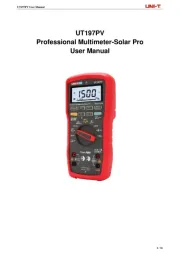
11 Augustus 2025
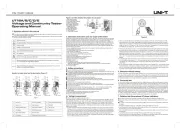
3 April 2025

3 April 2025

3 April 2025
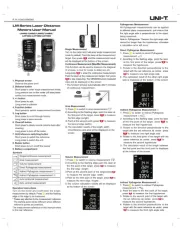
3 April 2025
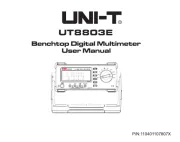
3 April 2025

3 April 2025

3 April 2025

3 April 2025

3 April 2025
Handleiding Multimeter
- Draper
- Hubinont
- Testboy
- Weltron
- Dasqua
- Somogyi
- Brennenstuhl
- Laserliner
- Micronta
- Appa
- Basetech
- IWH
- Steren
- Kyoritsu
- Monacor
Nieuwste handleidingen voor Multimeter
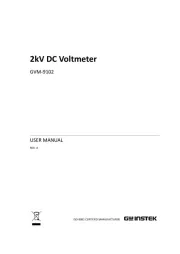
8 September 2025
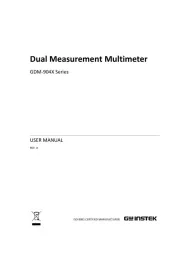
8 September 2025
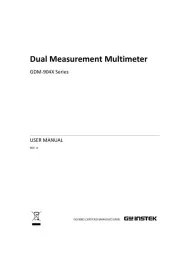
8 September 2025
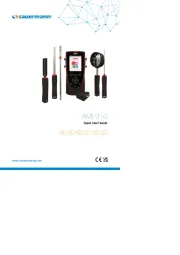
1 September 2025
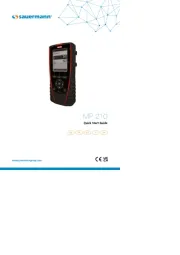
1 September 2025
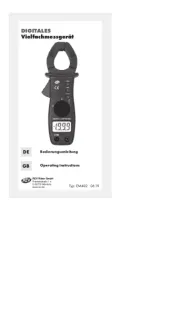
30 Augustus 2025
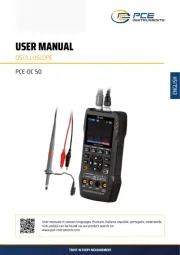
25 Augustus 2025
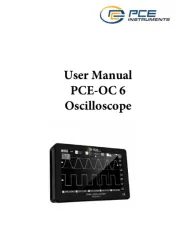
25 Augustus 2025
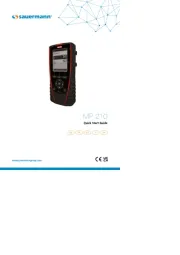
14 Augustus 2025
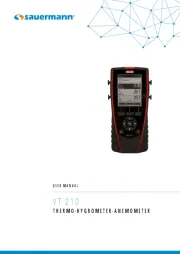
14 Augustus 2025